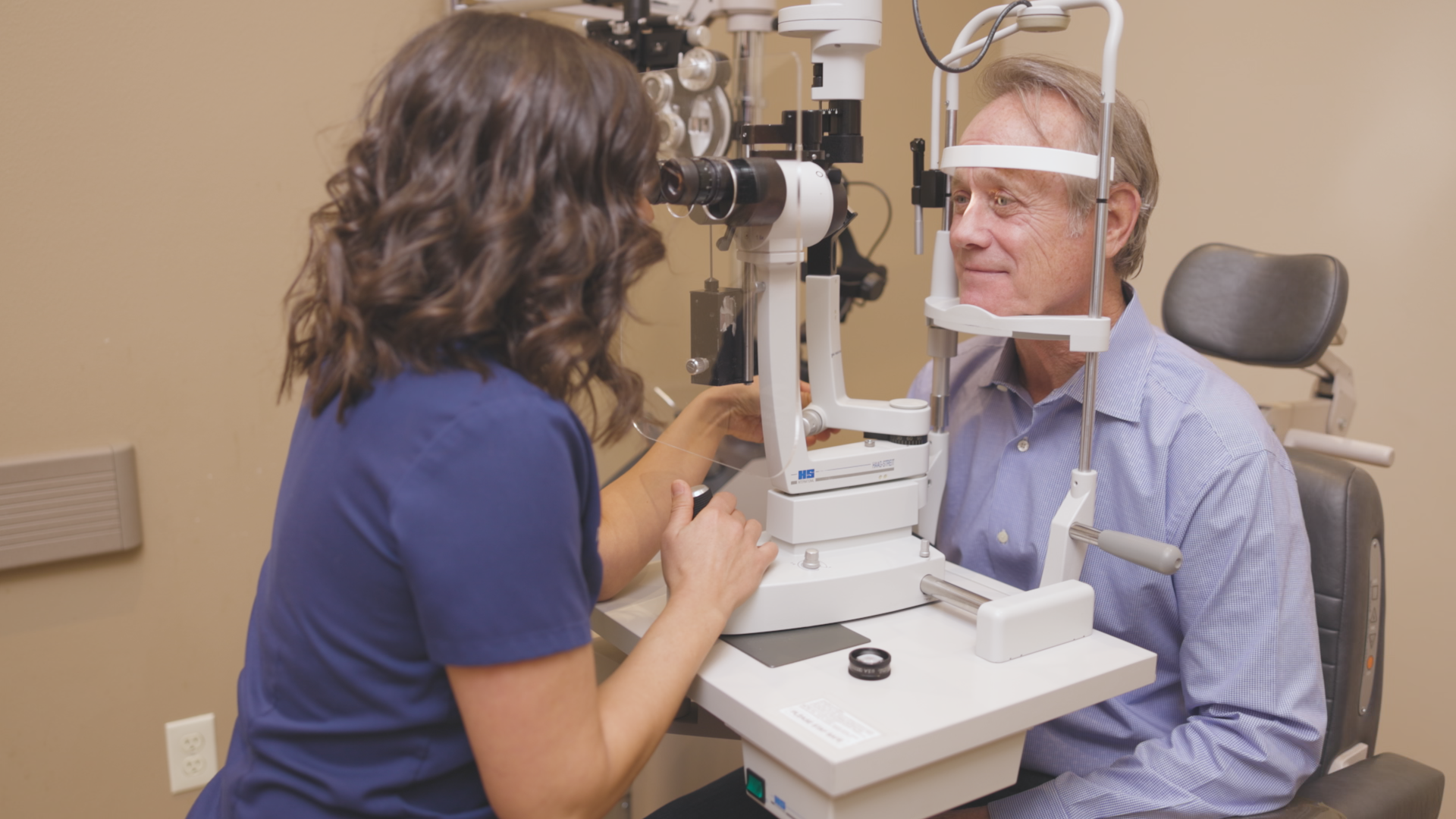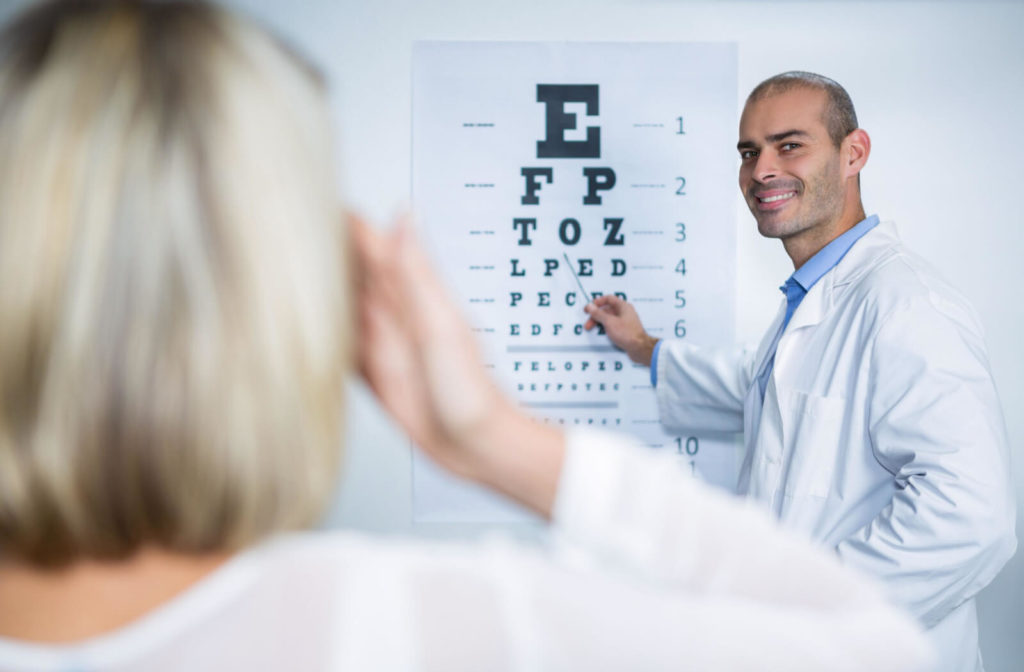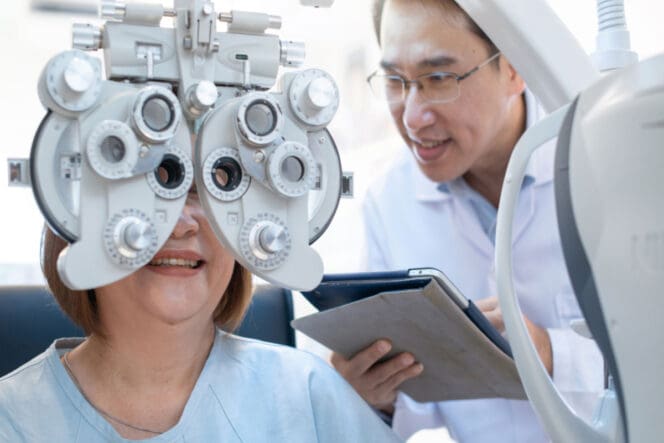Why Selecting an Eye Doctor Optometrist is Essential for Your Eyes
Why Selecting an Eye Doctor Optometrist is Essential for Your Eyes
Blog Article
Discovering the most recent Technological Improvements in Optometry and What They Mean for Optometrists
In the ever-evolving area of optometry, recent technological advancements are reshaping just how practitioners approach eye treatment. From the precision of Optical Comprehensibility Tomography to the nuanced insights offered by AI-driven diagnostic devices, these innovations are setting new standards in individual evaluation and therapy. Teleoptometry is poised to redefine availability, making sure that competence goes beyond geographical limitations. As these improvements permeate the method, optometrists are encountered with the obstacle of welcoming these devices to enhance patient results. The question continues to be: just how will these technical shifts redefine the duties and duties within the occupation?
Developments in Diagnostic Devices
Advancing the field of optometry, innovations in analysis devices have actually reinvented the way eye treatment experts examine and diagnose eye problems and aesthetic problems. The past years has actually observed considerable technical advancements, enabling even more detailed and exact analyses. Optical Coherence Tomography (OCT), as an example, provides high-resolution cross-sectional photos of the retina, permitting for the very early discovery of illness such as glaucoma and age-related macular degeneration. This non-invasive imaging method has come to be essential in modern optometric practice.
Another key advancement is the introduction of innovative corneal topography systems, which map the surface area curvature of the cornea with accuracy. These devices are particularly useful for fitting get in touch with lenses and detecting corneal problems. Digital retinal imaging has changed conventional ophthalmoscopy, offering thorough, breathtaking views of the retina that help with detailed aesthetic examinations.
The growth of wavefront aberrometry has actually likewise been essential, enabling the analysis of refractive mistakes with unequaled accuracy (Optometrist Chino). This technology aids in personalizing rehabilitative lenses and boosting surgical end results for refractive surgical treatments. Collectively, these analysis innovations encourage optometrists to provide exceptional person treatment, guaranteeing very early intervention and tailored treatment techniques, ultimately enhancing visual health results
AI in Person Management
Building on the structure of advanced diagnostic devices, the unification of fabricated intelligence (AI) in individual administration represents a transformative jump for optometry. AI systems are increasingly employed to enhance performance, accuracy, and customization in person treatment.
Additionally, AI-driven platforms facilitate streamlined person interactions and administrative procedures. Automated scheduling, digital consultations, and customized follow-up strategies not only boost individual satisfaction but additionally optimize time monitoring for professionals. These systems can triage patients based on the seriousness of their problems, guaranteeing that those in vital requirement get timely interest.
Additionally, AI improves decision-making by giving optometrists with evidence-based referrals and therapy paths. By incorporating data from electronic health and wellness documents, AI devices offer insights that educate medical choices, reducing the threat of errors and enhancing individual end results. As AI proceeds to progress, its duty in client monitoring will likely increase, improving the landscape of optometric care.
Breakthroughs in Retinal Imaging
In the realm of optometry, retinal imaging has seen exceptional technical developments that are enhancing analysis capabilities and client treatment. Developments such as Optical Comprehensibility Tomography (OCT) and fundus digital photography have actually transformed just how optometrists imagine and evaluate the retina. OCT, specifically, provides high-resolution, cross-sectional photos of the retina, permitting for the in-depth examination of its layers. This capacity is vital for very early discovery and management of problems like glaucoma, diabetic retinopathy, and age-related macular degeneration.
Enhanced imaging techniques like OCT angiography are further refining analysis precision. This non-invasive technique maps blood flow in the retina, providing vital understandings into vascular health without the need for dye shots. Additionally, adaptive optics technology is being incorporated into retinal imaging systems to fix ocular aberrations, delivering unprecedented image clearness. Such innovations facilitate the recognition of min retinal adjustments that can represent disease development.
Moreover, improvements in expert system are increasing retinal imaging by making it possible for computerized analysis of big datasets. These systems assist optometrists in identifying patterns indicative of pathology, thereby boosting analysis precision and performance. Jointly, these developments are changing retinal imaging into a cornerstone of modern-day eye care, boosting results and broadening healing opportunities.
Teleoptometry's Expanding Duty
Teleoptometry is significantly coming to be a vital element of eye treatment, driven by advancements in electronic communication and analysis devices. As optometry accepts digital change, teleoptometry assists in remote appointments, allowing optometrists to prolong their solutions past standard boundaries. This is specifically advantageous in underserved and rural locations where access to specialized eye treatment is often limited. By leveraging high-resolution video conferencing and advanced retinal imaging, eye doctors can carry out thorough eye tests from afar, making sure prompt diagnosis and treatment.
The combination of expert system (AI) more enhances teleoptometry, enabling the analysis of visual data and helping in the detection of ocular problems such as glaucoma and diabetic person retinopathy. AI-powered algorithms can swiftly translate intricate imaging data, providing optometrists with useful understandings that reinforce medical decision-making.
Moreover, teleoptometry supports connection of treatment via smooth combination with electronic wellness documents (EHRs), permitting optometrists to preserve detailed person histories. This makes sure that clients receive consistent and personalized treatment also when talking to different experts.
Regardless of these benefits, difficulties stay, consisting of guaranteeing information security and managing individual assumptions. However, teleoptometry stands click this for a substantial stride in the direction of more available, effective, and patient-centered eye treatment. As technology evolves, its duty is poised to broaden even more.

Future Fads in Eye Care
A myriad of cutting-edge patterns is readied to reshape the future of eye care, check my reference driven by technological developments and the advancing demands of people. One considerable pattern is the assimilation of expert system (AI) in diagnostics, which guarantees to enhance the accuracy and efficiency of eye assessments. AI algorithms can assess vast quantities of information from retinal photos, potentially finding problems like diabetic person retinopathy and glaucoma earlier than conventional approaches.
Moreover, customized medicine is acquiring grip in optometry, with genetic testing educating customized therapy strategies. This method aims to maximize patient end results by tailoring treatments to specific genetic accounts. Wearable modern technology, such as smart call lenses, is also coming up, supplying real-time surveillance of intraocular pressure or glucose levels, thus providing constant understandings into ocular and systemic health.
The fostering of enhanced truth (AR) and virtual fact (VR) in training and patient education is one more emerging trend. These technologies use immersive experiences that can improve understanding and skills both for eye doctors and clients. As these fads develop, optometrists should remain abreast of technical advancements to offer sophisticated care, guaranteeing enhanced client end results and contentment in the dynamic landscape of eye treatment.
Conclusion

Collectively, these analysis developments empower eye doctors to supply superior client treatment, making certain very early intervention and tailored treatment methods, inevitably enhancing visual health end results.

As these modern technologies continue to evolve, optometrists need to adjust and integrate them into technique, eventually maximizing process efficiency and boosting the requirement of eye treatment supplied to people.
Report this page